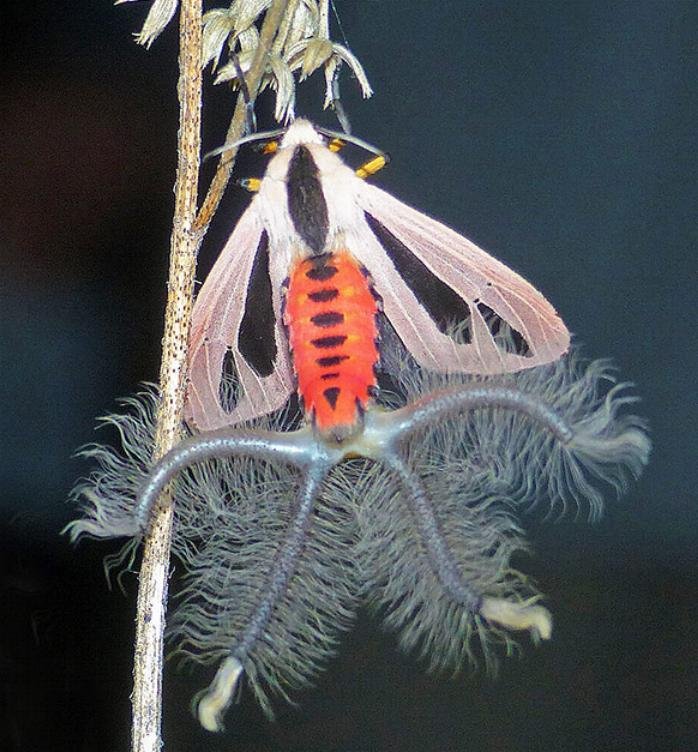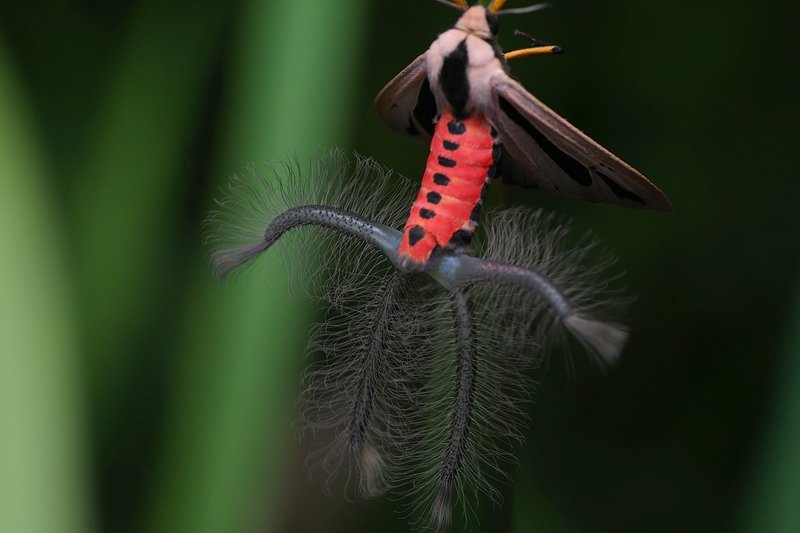Welcome to another post of my strange animals series where you get to meet some of the weirdest, coolest, and craziest animals in the world.
Like yesterday, I will start today's post with a video that has become an internet sensation in the past few days. The video features an alien-like moth that I think will make your jaw drop:
Apparently, the footage was taken by Facebook user Gandik, who lives in Kebumen, Jawa Tengah, Indonesia.
Is this weird creature real? Is it fake? Is it here to take our souls?
To the fear of some, yes this hellish creature is 100 % real. But don't worry, it's not here to take your soul! It's just a very horny bug, so make sure to keep your pants on if you ever encounter one!
Scientifically described as Creatonotos gangis, this moth is endemic to South East Asia and Australia. As for the strange hairy appendages, they are a male-exclusive feature called coremata.
Also called "hair-pencil", coremata are pheromone signaling structures present in lepidopteran (moths and butterflies) males. These glands rest inside the body of males, but when the time to mate comes they get out to produce pheromones and attract females. [3]
Usually these glands are quite small, for example have a look at the African monarch:
 African monarch (Danaus chrysippus) showing hair-pencil at the end of the abdomen (credit)
African monarch (Danaus chrysippus) showing hair-pencil at the end of the abdomen (credit)
Obviously, the same is not true for Creatonotos gangis, as their hair-pencil can exceed the length of their body when inflated:

Male C. Gangis with four coremata inflated (credit)
The pheromone produced by males is called hydroxydanaidal. Interestingly, the size of the coremata and the amount of pheromones produced by C. Gangis is dependent on the diet that the moth has during the caterpillar stage:
The amount produced, and the size of the coremata which produce it, are however dependent on the diet that the moth experienced as a caterpillar. If the larval diet contained pyrrolizidine alkaloids, then the coremata become large and the male will release up to 400 milligrams (0.4 grams) of hydroxydanaidal [2]
If the larvae fail to eat enough pyrrolizidine alkaloids then the coremata do not grow large enough, no scent is produced and adults fail to reproduce.
The species was first described by Carl Linnaeus in his 1763 Centuria Insectorum.
It's a minor pest, with the caterpillars attacking groundnuts, rice, ragi, sorghum, coffee, sweet potato, lucerne and other crops. C. gangis doesn't bite or sting.
There not much else interesting to say about this species so here's another cool photo:
 (credit)
(credit)
Like always, don't forget to visit the links in the references down below if you want to learn more about this weird critter!
More Strange Animals
If you enjoyed reading about this strange creature make sure to check some of my latest posts. I am sure you will love them:
- This Hummingbird Is Just So Weird! Can You Guess Why?
- This Deep Sea Creature Looks Like An Alien Spaceship
- World's Largest Millipede VS Smallest Millipede
- The Weird Looking Cantor's Giant Softshell Turtle
- Gasteracantha: Tiny Spiders From Hell!
- 7 Horrifying Micro-Monsters That Will Haunt Your Dreams
References & Further Reading
- Independent.co.uk
- Wikipedia.org/wiki/Creatonotos_gangis
- Wikipedia.org/wiki/Hair-pencil
- https://www.gbif.org/species/112888703
 Steemstem & SteemitEducation
Steemstem & SteemitEducation
Steemstem is the go-to place for science on Steemit. Check it out at @steemstem or visit the #steemSTEM channel. A big thank you also goes to the guys from @steemiteducation for supporting my content!
Greek Community
A final big thanks goes to my fellow greeks for their support and love. Follow the greek-trail or check the facebook page for more greek content!

